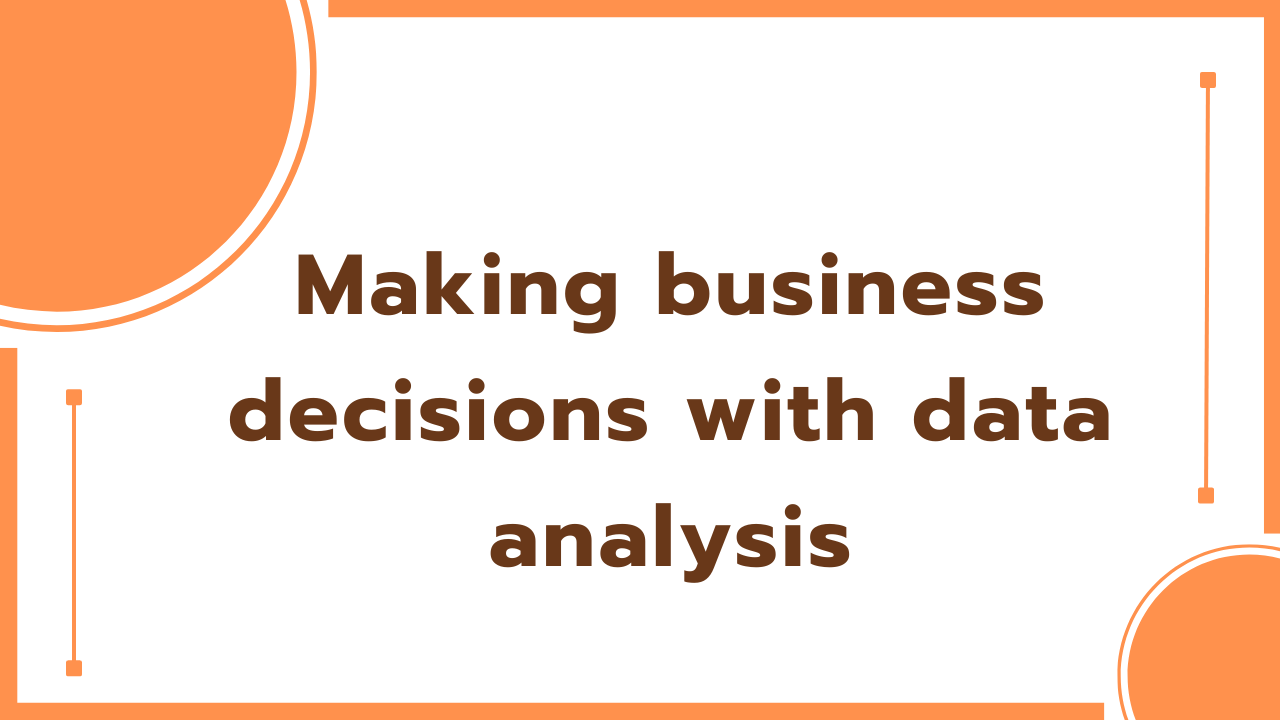How Can You Make Business Decisions More Effective with Data Analysis?
Data analysis is one of the keys to making business decision-making processes more effective. Today, by using data analytics, businesses can make more informed and strategic decisions. First, by using the right data collection and analytical tools, businesses can turn existing data into meaningful information. This information provides in-depth insights into performance indicators and trends. In addition, analysis of data enables more objective results to be achieved by reducing biases in decision processes. Data analytics helps decision makers determine which strategies are more effective, thus enabling more efficient use of resources. In this process, regularly updating and analyzing data ensures that business decisions are always supported by the most up-to-date information.
What are the Methods of Making Strategic Decisions with Data Analytics and Business Intelligence?
Data analytics and business intelligence are important tools that strengthen strategic decision-making processes. Thanks to data analytics, businesses can identify meaningful trends and patterns by processing large data sets. This plays a critical role in developing long-term strategies and evaluating the success of existing strategies. Business intelligence tools make data understandable and support strategic planning with features such as data visualization and reporting. Additionally, data analytics and business intelligence provide competitive advantage by monitoring market trends and customer behavior. In this way, businesses can develop more conscious and target-oriented strategies. In these processes, an effective data management strategy ensures that you obtain accurate and timely information.

How Do Database-Based Decision Making Processes Work in Businesses?
Data-based decision-making processes make the decision-making mechanisms of businesses more systematic and objective. This process includes the stages of collecting, processing and analyzing data. In the first step, data is collected from various data sources and combined into a central data repository. Analyzing data reveals important information such as trends and anomalies. In the second stage, analysis results are transformed into information that supports business decisions. Visualizing this information allows decision makers to better understand the data. Finally, strategic decisions are made in line with the information obtained, and these decisions help the business achieve its goals. This method eliminates biases in decision-making processes and enables more robust and data-based decisions to be made.
How to Strengthen Business Decisions with Data Visualization Techniques?
Data visualization empowers business decisions by presenting complex data sets in an understandable and meaningful way. Visualization techniques help quickly grasp important information and trends from large data sets. Visualization tools such as graphs, tables, and maps enable data to be analyzed and interpreted quickly. Interactive visualizations, in particular, allow users to interact with data and perform more in-depth analysis. These techniques enable decision makers to better understand data and help them make strategic decisions more effectively. labs.vayes.com.tr allows you to support your business decisions with data visualization solutions.
How to Gain Competitive Advantage with Big Data Analysis?
Big data analysis is a powerful tool that gives businesses a competitive advantage. Big data includes huge data sets collected from various sources, and this data is used to analyze market trends, customer behavior and operational performance of businesses. Thanks to data analysis, businesses can better understand customers' needs and develop more targeted strategies. Additionally, big data analysis offers opportunities for increased efficiency and cost reduction in business processes. It is possible to predict future trends and develop strategies accordingly with predictive analytics methods. These methods enable businesses to make more effective and strategic decisions by increasing their competitive advantage in the market.
Automating Decision Making Processes with Machine Learning and Artificial Intelligence
Machine learning and artificial intelligence offer significant benefits to businesses by automating decision-making processes. These technologies analyze large data sets to identify patterns and trends and predict future outcomes. Machine learning algorithms continuously learn from data and thus make more accurate predictions in decision-making processes. Artificial intelligence minimizes human intervention and speeds up processes in tasks such as data analysis and predictive modeling. This automation enables businesses to make faster and more efficient decisions, while also reducing human errors in the decision-making process. labs.vayes.com.tr makes your decision processes more effective and efficient with its machine learning and artificial intelligence supported solutions.
Fast and Effective Decision Making with Real-Time Data Analysis
Real-time data analysis allows businesses to access instant information and make quick decisions. This type of analysis is a process where data is continuously collected and processed, providing businesses with up-to-date information. Real-time analysis provides the ability to instantly respond to rapidly changing market conditions and customer needs. Additionally, this method provides instant performance monitoring and rapid intervention, increasing operational efficiency. This provides a competitive advantage, especially in dynamic and fast-paced industries. Instant analysis of data enables strategic decisions to be made quickly and business processes to be managed more effectively.
Benefits of Using Predictive Analytics for Businesses
Predictive analytics provides the ability to predict future events from historical data. This type of analytics helps businesses predict future market trends and customer behavior. Predictive analytics supports strategic planning by using areas such as sales forecasting, risk management and customer segmentation. This type of analysis allows businesses to foresee potential problems and take proactive measures. It also provides valuable insights to guide business strategies more accurately and use resources more efficiently. labs.vayes.com.tr optimizes your business processes with predictive analytics solutions.
Risk Management with Data Analysis: What Strategies Should Be Implemented?
Data analysis is a critical tool for developing an effective strategy in risk management. Thanks to data analysis, businesses can identify potential risks and take proactive measures against these risks. In the risk analysis process, after data is collected, analyzes are performed on these data and risk factors are evaluated. Using risk prediction models, possible risk scenarios are predicted and strategies are developed against these scenarios. Additionally, risks are detected and managed in a timely manner by continuous data monitoring and analysis. This helps businesses minimize risks and ensure operational continuity. labs.vayes.com.tr strengthens your risk management strategies with comprehensive data analysis.
Optimizing Marketing Strategies Using Customer Data
Customer data is an important resource for optimizing marketing strategies. This data provides in-depth information about customer behavior, preferences and purchasing habits. Data analysis makes it possible to create personalized content and targeted offers to increase the effectiveness of marketing campaigns. Customer segmentation and behavior analysis make marketing strategies more effective and targeted. Additionally, data-based analytics provide the opportunity to continuously optimize strategies by monitoring campaign performance. This increases customer satisfaction
What Data Analytics Tools Should Be Used to Support Business Decisions?
Data analytics helps businesses make strategic decisions more consciously and effectively. The right tools to be used in this process support decision-making processes by facilitating the analysis and interpretation of data. Among the data analytics tools widely used in the business world, Tableau, Power BI, and Google Analytics stand out. Tableau turns complex data into understandable graphs and tables with its user-friendly interface and powerful data visualization features. As a tool offered by Microsoft, Power BI stands out with its data integration and customizable reporting features. Google Analytics is an especially effective tool in web and digital marketing analytics, providing in-depth insight into user interactions. These tools enable data to be analyzed accurately and business decisions to be made on an informed basis. The right selection of relevant tools helps you make more effective and strategic decisions by optimizing your business's data analytics strategies. labs.vayes.com.tr offers solutions to help you use the most appropriate data analytics tools to support your business decisions.
Data Mining and Effective Decision Making Strategies in Business Processes
Data mining is a powerful technique used to obtain valuable information in business processes. This process is used to reveal hidden patterns and relationships within large data sets. With data mining, businesses can gain deep insights into customer behavior, market trends, and operational performance. For example, data mining can be used in customer segmentation and targeting strategies, thus creating more personalized marketing campaigns. Additionally, inefficiencies and potential problems in operational processes are detected earlier and solution strategies are developed. It is supported by methods such as data mining, risk management and predictive analytics for effective decision-making strategies. These strategies enable data to be constantly analyzed and decisions made in line with the strategic goals of the business. The information obtained through these methods helps optimize business processes and provide competitive advantage. labs.vayes.com.tr makes your business processes more efficient and competitive with data mining and effective decision-making strategies.




